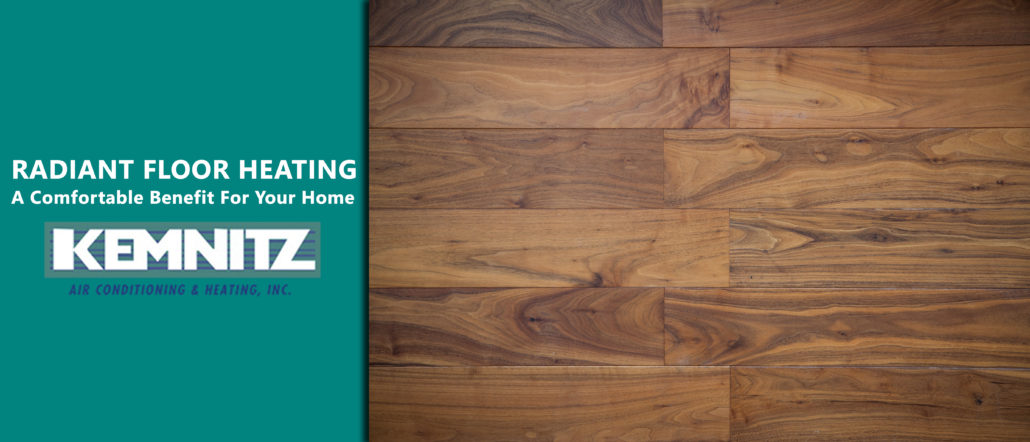One of the most uncomfortable things about a home in winter is walking across a cold floor barefoot. That tile floor when you get out of the shower. Or when making your way through the kitchen, bleary-eyed in the morning. What can be done about this? Well, you could wear slippers. But that’s not ideal if you’re unhappy with forced-air heating, radiator heating, and how they can create layers of warm air on top of a room and cold air on bottom.
Methods of Floor Heating
There are two main methods of heating the floors in your home:
- Electric resistance heating
- Hydronic (How water) heating
While some systems use hot air to heat the floors, they’re terribly inefficient as air is a poor conductor of heat. Not many companies still manufacture this equipment or recommend using it.
The systems that use electric heating accomplish the heating of floors through the use of resistance wiring. This wiring heats up when the system is turned on and radiates its heat to the floor above. Whole houses can be heated with this method but most often they are installed in single rooms that the heat is desired in. One reason is ease of retrofitting a house with the equipment. The second reason is cost. It’s much less expensive to install in a few rooms than a hydronic system.
Hydronic systems employ the use of either a propylene glycol/water mixture or straight water to heat the flooring. To retrofit a house with this system if can be a bit more costly than an electric system, however they have a much higher efficiency rating.
Considerations For the use of Floor Heating
- Floor coverings
- Installation and Construction
If you want carpeting in your home you might want to consider sticking with using a furnace for heating or use a carpet that is densely packed and with a thin backing in order to get as much heat to radiate through it as possible. But keep in mind that any carpeting, or large area rugs, are going to insulate the flooring.
Both electric and hydronic systems can be installed “wet”, directly laid into concrete as it is being poured, or dry, laid on top of the flooring surfaces. Electric systems can also be installed underneath the wooden subfloor with heat-reflective insulation installed underneath that to radiate the heat upwards into the flooring.
There are many advantages to a radiant floor heating system in your home. If you would like to discuss your options in radiant floor heating, give us at Kemnitz Heating & Air Conditioning a call today!
Category: Heating Tags: heating options, home heating system


